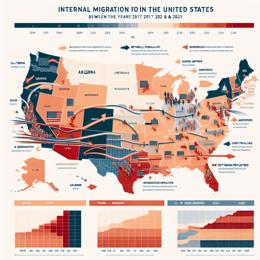Image created by AI
South Korea's Fertility Crisis Deepens Further In 2023
The demographic landscape of South Korea faces a stark reality as the nation's fertility rate, already holding the record for the lowest globally, plunged even further in 2023. As South Korean women increasingly choose to postpone childbirth or forgo it altogether due to career aspirations and financial considerations, the consequences ripple through societal and economic structures.
According to Statistics Korea, the expected average number of babies per South Korean woman has dropped to an unprecedented 0.72, a sharp decrease from 0.78 in the previous year. This figure stands in stark contrast to the replacement level fertility rate of 2.1, which is necessary to maintain a stable population balance. What's more alarming is the rapid decline from a fertility rate of 1.24 in 2015, indicating a heightened acceleration in the trend of low birth rates in the country.
For over half a decade, South Korea has been the only OECD country with a fertility rate consistently below 1, a phenomenon that persists despite significant financial efforts to incentivize childbirth. The government has invested billions of dollars in programs to boost fertility, with minimal success, signaling an urgent need for policy revision and cultural reassessment.
A revealing example is Gwak Tae-hee's situation, a 34-year-old junior manager, who illustrates a common dilemma faced by many South Korean women. The narrow promotion windows within corporate environments and the significant career disadvantages encountered during maternity leave forces many to postpone their plans for children. For Gwak and others, the fear of it being 'too late' weighs heavily against professional ambitions.
This fertility decline is not restricted to the general populace but is particularly pronounced in Seoul, the capital city, where soaring housing costs contribute to a lower rate of 0.55. The rising cost of housing, education, and overall expense of raising children are central factors deterring couples from starting families.
As the nation approaches elections in April, political parties have seized on this demographic crisis to shape their platforms, promising increased support such as public housing and easier loan access to foster childbirth. However, past strategies have proven inadequate in halting or reversing the decline, with the fertility rate poised to drop to 0.68 by 2024, as projected by the authorities.
The implications of the fertility crash are dire: South Korea braces for a severe impact on economic growth and the social welfare system, with projections suggesting the population could halve by the century's end. The demographic crisis also highlights the broader regional issue, with Japan and China reporting similar decreases in birth rates.
The Statistics Korea official's briefing indicates a strategic pivot to address reasons why married couples choose to remain childless. Yet, as marriage rates also dwindle, the challenge extends beyond the immediate sphere of family planning into broader cultural and socioeconomic arenas.
The question persists: how will South Korea confront and adapt to these seismic demographic shifts? The government's response, coupled with societal adaptation, will determine the country's ability to navigate this unprecedented territory.


